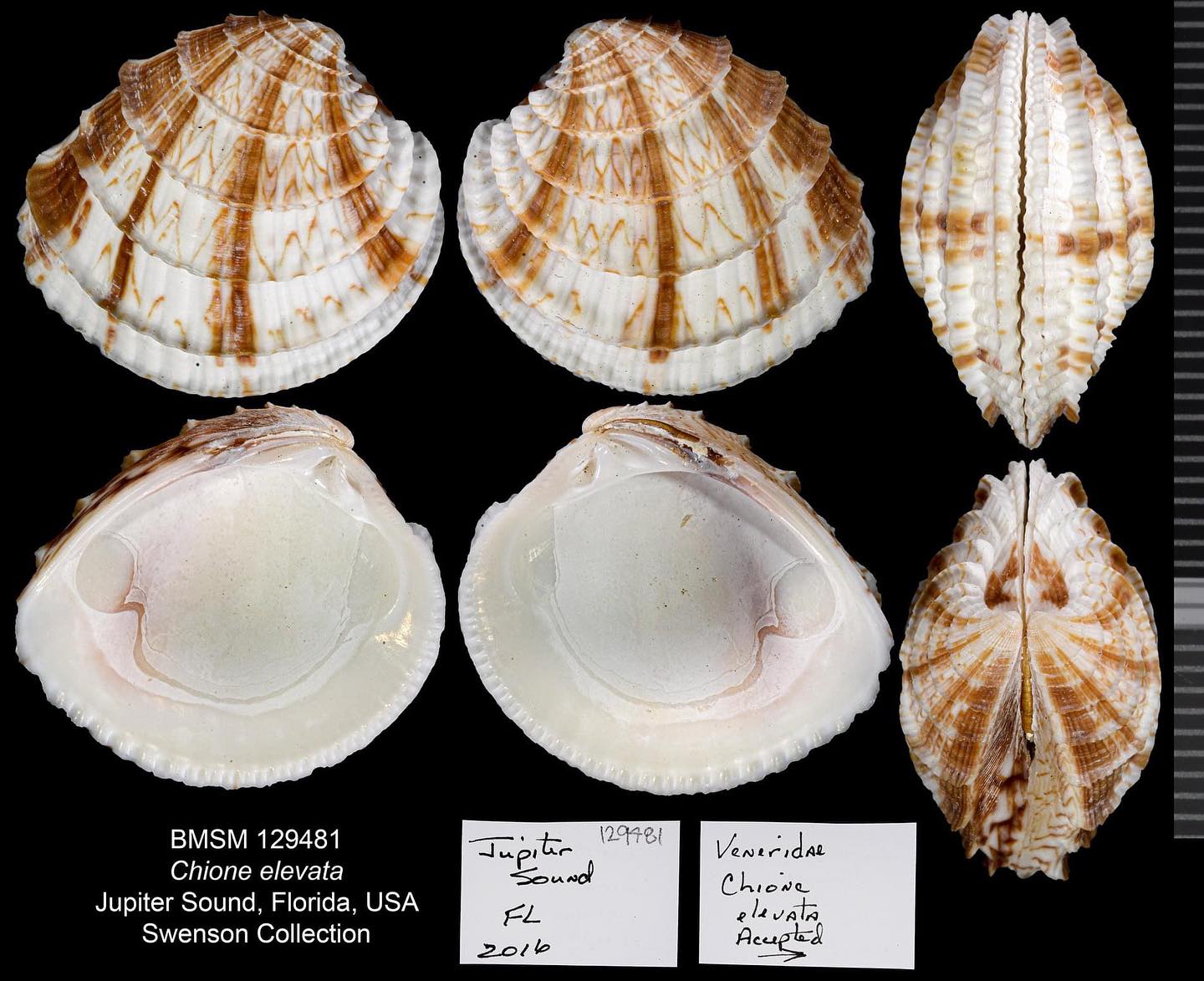Summary:
1. The Cross-barred Venus, Chione elevata, is a common shell found along the coastline.
2. Don Swenson’s Collection of Cross-barred Venus shells was donated to the Bailey-Matthews National Shell Museum.
3. The unique appearance of the Cross-barred Venus shell makes it a standout among other shells.
4. Explore the fascinating biology and habitat of the Cross-barred Venus.
5. Learn about the conservation efforts surrounding this species and its importance in the ecosystem.
Unveiling the Enigmatic Beauty of the Cross-barred Venus from Florida’s East Coast
When strolling along the sandy beaches of Florida’s picturesque coastline, it’s hard not to notice the treasures hidden beneath the rolling waves. The Cross-barred Venus, scientifically known as Chione elevata, stands out as a remarkable specimen among the myriad of shells on the shore. Although plentiful in the area, the captivating shell’s appearance and intriguing nature of this shell are of desire for shell enthusiasts and beachcombers alike. Let’s delve into the world of the Cross-barred Venus, and explore its unique and fascinating aspects.
Before we embark on this whimsical journey, the esteemed collection of Don Swenson is worth mentioning. This passionate shell collector was generously donated to the distinguished Bailey-Matthews National Shell Museum in early 2020. The collection, which includes a vast array of Cross-barred Venus shells, serves as a testament to the beauty and allure of these marine wonders. The photographs graciously provided by James F. Kelly add an extra layer of charm and authenticity to our exploration.
At first glance, the Cross-barred Venus shell captivates us with its intricate and captivating appearance. The shell boasts a lovely elongated oval shape, accentuated by pronounced ribs that create distinctive raised patterns. These ornate crossbars, from which the shell derives its name, give it an alluring and remarkable essence. The pale color palette of the shell’s exterior is a stark contrast to the vibrant hues concealed within, revealing a delightful interplay of light and shadow. This captivating juxtapositions-barred Venus cap is a coveted shell among collectors and admirers.
As we delve deeper into the biology of the Cross-barred Venus, we discover that these shells serve as the protective homes for a species of bivalve mollusk. Bivalves, such as clams and mussels, inhabit marine and freshwater environments, playing crucial roles in maintaining the delicate balance of our ecosystems. The Cross-barred Venus is no exception, contributing to the web of life along Florida’s coastline.
The habitat of the Cross-barred Venus extends along the east coast of Florida, particularly in Jupiter Sound. Here, the warmTherovide an ideal environment for these shells to thrive. As they settle on the sandy ocean floor, the Cross-barred Venus diligently filters water to glean nutrients while simultaneously contributing to the purification of their surroundings. Their presence not only adds to the area’s aesthetic appeal but also contributes to the overall health of ecosystems. The significance of these shells in maintaining the ecological balance, and conservation efforts have been initiated to ensure their continued existence. Through education and awareness, organizations like the Bailey-Matthews National Shell Museum are actively working to protect and preserve the habitats of the Cross-barred Venus. By understanding the importance of these shells and their ecological role, we can inspire others to appreciate and respect the delicate ecosystems that house these remarkable creatures.
In conclusion, the Cross-barred Venus, a common shell found along the Florida coastline, possesses an undeniable allure and charm. From its ornate crossbars to its delicate hues, it stands as a testament to the extraordinary beauty of the natural world. Don Swenson’s Collection of Cross-barred Venus shells, now housed in the Bailey-Matthews National Shell Museum, further showcases these shells’ magnificence and importance in our ecosystem. By fostering an appreciation for these fascinating marine creatures, we can work together to protect and preserve the fragile balance of our oceans.
So the next time you find yourself on Florida’s beautiful shores, take a moment to admire the intricacies of a Cross-barred Venus shell. Peer into its enchanting patterns, reflect on its role in the ecosystem, and be reminded of nature’s incredible diversity and wonders. Any of these shells inspire you to protect and cherish our natural world, ensuring that future generations can also revel in the remarkable marvels of the Cross-barred Venus.
*****
Source Description
The Cross-barred Venus, Chione elevata, from Jupiter Sound, east coast of Florida. It is very common around the Florida coastline and is a cool-looking shell. Part of Don Swenson’s Collection was donated to the Bailey-Matthews National Shell Museum in early 2020. Photos by James F. Kelly. More? ShellMuseum.org/blog

